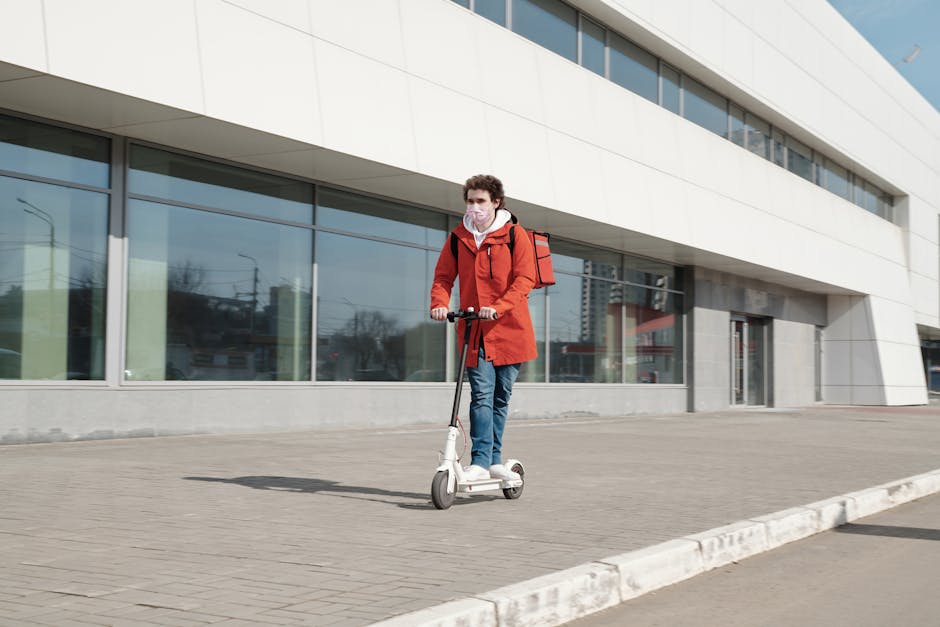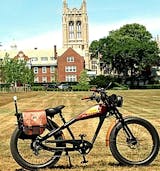
The Benefits of Urban E-Scooters in Reducing City Traffic Congestion
In a bustling urban landscape where every moment counts, the swift rise of urban e-scooters offers a glimmer of hope in alleviating the endless traffic gridlocks. As these sleek electronic companions zip through the streets, their potential in transforming commuter routines and curbing congestion becomes increasingly evident.
Revolutionizing urban mobility
The emergence of urban e-scooters has heralded a new era in urban transportation. Offering a blend of convenience and eco-friendliness, these electric marvels have swiftly carved a niche in city landscapes worldwide. Embracing the ethos of minimalism and efficiency, urban e-scooters symbolize a departure from traditional modes of transport, paving the way for a more sustainable urban future.
With the rising demands for flexible commuting options, urban e-scooters provide a refreshing alternative for city dwellers. Their compact design and ease of use make them an appealing choice for short to medium-distance travel, reducing reliance on conventional vehicles and minimizing the carbon footprint in densely populated areas.
As urban centers grapple with the ever-growing challenges of traffic congestion and air pollution, urban e-scooters emerge as a beacon of change. Their ability to swiftly navigate through traffic bottlenecks not only saves valuable time for commuters but also contributes to a cleaner urban environment by reducing emissions and promoting sustainable commuting habits.
The futuristic allure of urban e-scooters lies not just in their innovation but in their transformative potential for urban mobility. By weaving a tapestry of connectivity across bustling cityscapes, these electronic steeds offer a glimpse into a future where urban transportation seamlessly integrates with sustainability and efficiency, reshaping the urban commute experience for generations to come.
Impact on traffic congestion
Urban e-scooters serve as nimble warriors in the battle against urban traffic congestion. Their agile maneuverability and compact size enable riders to weave through crowded streets with unparalleled ease, bypassing the gridlocks that often plague traditional vehicular traffic. By offering a swift and efficient mode of transport, e-scooters aid in decongesting urban arteries and streamlining the daily commute for countless city denizens.
The ripple effect of integrating urban e-scooters into city landscapes is palpable. With each rider opting for these futuristic companions, the burden on existing transportation systems diminishes, leading to reduced traffic snarls and smoother flow across urban thoroughfares. This shift towards micro-mobility not only frees up road space but also encourages a shift towards greener, more sustainable urban transport solutions.
As urban planners and policymakers recognize the transformative impact of urban e-scooters on traffic congestion, initiatives to integrate these agile vehicles into urban infrastructures gain momentum. From designated lanes to innovative parking solutions, cities are embracing the e-scooter revolution as a step towards a more fluid, interconnected urban transit ecosystem. With each glide of an e-scooter, the urban landscape shifts towards a more harmonious fusion of mobility and sustainability.
Environmental benefits of e-scooters
Beyond their role in alleviating traffic congestion, urban e-scooters emerge as champions of environmental stewardship in urban environments. With zero tailpipe emissions and minimal energy consumption, these electric wonders offer a greener alternative to traditional gasoline-powered vehicles, significantly reducing the carbon footprint of urban commuting.
The silent hum of urban e-scooters echoes a profound shift towards quieter, cleaner urban streets. As these eco-conscious commuters glide noiselessly through the cityscape, the impact on noise pollution becomes apparent. By embracing e-scooters as part of the urban mobility solution, cities can aspire to quieter, more peaceful environments that resonate with the rhythms of sustainable living.
The marriage of technology and sustainability finds a perfect union in urban e-scooters. Powered by rechargeable batteries and designed for efficiency, these vehicles embody a vision of urban transport that harmonizes with the natural world. As urban populations seek pathways to reduce their environmental footprint, the adoption of e-scooters signifies a meaningful stride towards a cleaner, healthier urban future.
Regulations and challenges
Amidst the rapid integration of urban e-scooters into cityscapes, regulatory frameworks play a crucial role in ensuring the safe and harmonious coexistence of these electric companions with other road users. From speed limits to designated e-scooter zones, cities are navigating the complexities of integrating this new mode of transport while prioritizing public safety and urban mobility efficiency.
As e-scooter ridership surges, challenges related to infrastructure, parking, and user behavior come to the forefront. Striking a balance between promoting micro-mobility and addressing concerns about sidewalk congestion and urban clutter requires innovative solutions and collaborative efforts between city authorities, urban planners, and e-scooter operators.
The dialogue surrounding urban e-scooters extends beyond convenience and environmental benefits to encompass broader discussions on urban planning, social equity, and public space utilization. As cities grapple with the e-scooter revolution, the need for proactive regulation, community engagement, and sustainable urban development frameworks becomes ever more pressing to steer this urban mobility evolution towards a shared, inclusive future.
Redefining Urban Mobility
Embracing urban e-scooters is not just about reducing traffic jams; it’s a step towards redefining city mobility. With each silent glide through crowded streets, these e-scooters symbolize a shift towards a more sustainable, efficient urban future. As we navigate the urban fabric, let’s embrace the promise of urban e-scooters as allies in our quest for smoother, greener city horizons.







